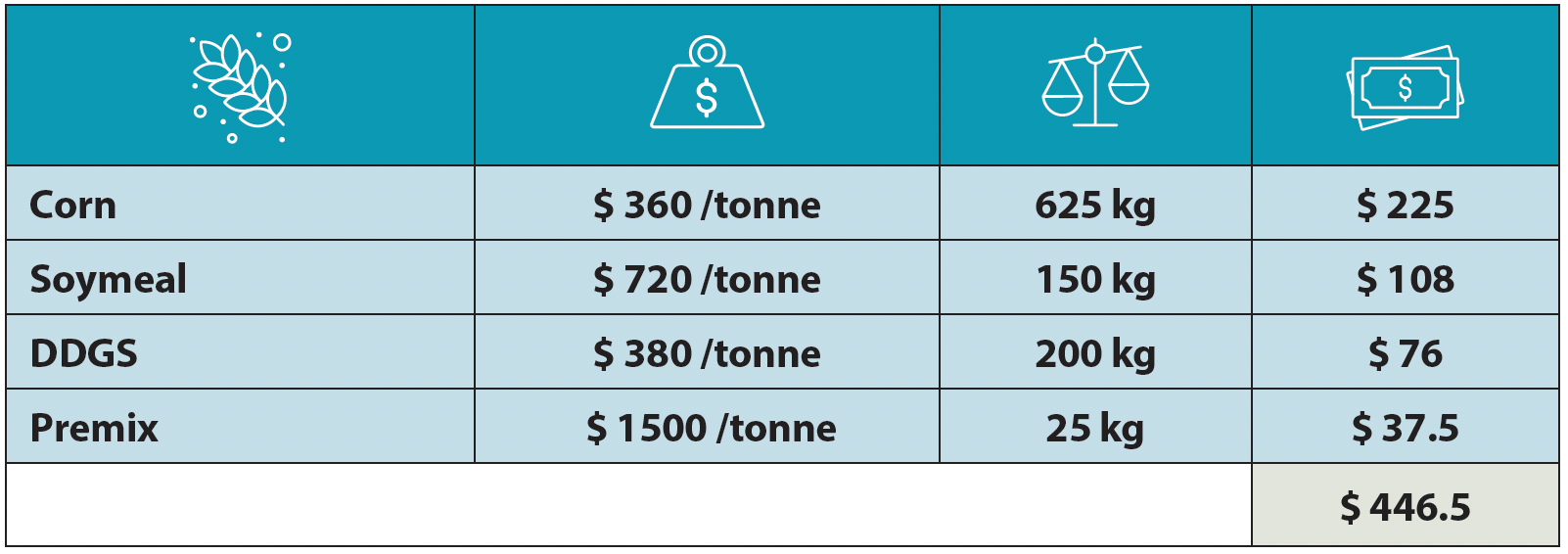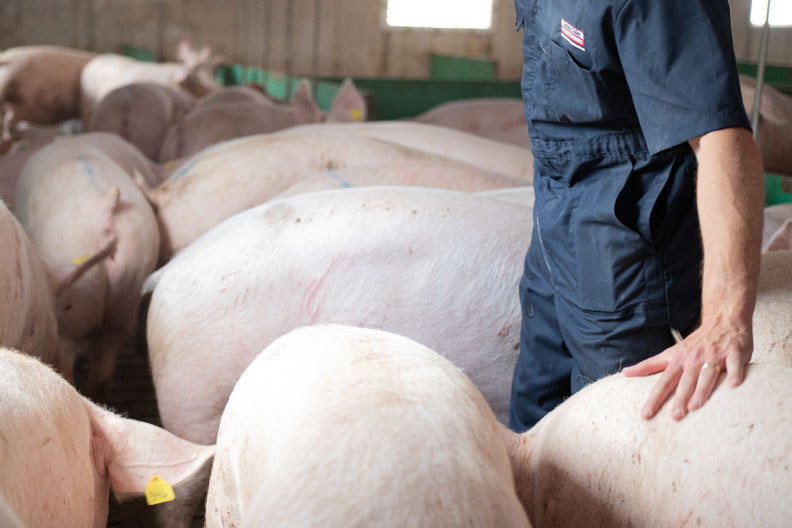By Ken Vanderheyden
Monogastric Specialist
Grand Valley Fortifiers
We are in a new era of skyrocketing inflation rates and we are all vulnerable, including our farm production enterprises. How are we going to address these new highs in fuel, crop inputs, and feed commodity prices? I suggest we focus on the things we have some control over starting with feed management.

- A 130 kg hog gains 105 kg x 2.70 feed conversion 285 kg feed x $446.50 = $127.25
- Let’s drop the feed conversion to 2.6 x 105 kg x $446.50 = $121.90. A difference of $5.35 /hog
- How do we capture some of this $5.35 /hog and in some cases, more? Feeder management is a good place to start.
- A four hole double sided feeder @ 3 turns /year will finish 300 market hogs. 300 x $127.25 = $38,1750 of feed per year through each grower/finisher feeder.
- Feeder settings with 1/3 pan floor showing and 2/3 pan floor with feed covering is ideal.
- Full feeders allow pigs to drag feed out and into the gutter. Too little feed equals slower growth and more maintenance feed required. Poor feeder management and maintenance is an insipid profit robber.
- Feed grind of 500 -700 microns is ideal. This would be a 1/8 to 5/32 inch screen. Make sure there are no kernels getting through holes and wear. Particle size testing can help with this.
- Maintain cement pads to prevent pitting, deterioration, and protruding stones, offering a comfortable step to prolong feeding time.
- When shipping hogs, know your ideal shipping weight. Ideal weights produce optimum fat <18 mm, muscle of >68 mm , lean >61 mm to maximize index and lean premiums. Consider subscribing to our Profit Finder program which provides weekly shipping data analysis in an easy to view dash board report.
- With winter weather comes fine tuning of ventilation. Make sure air inlets are cleaned and operating freely. Repair drops, resulting in air quality of less than 15 ppm ammonia.
- Health is crucial for great production performance. PRRS, swine flu, circovirus, mycoplasma, bacterial pneumonia, ileitis, all play a big part in your operation’s efficiency and success.
- Review your protocols with your veterinarian. Vaccinating is a stressful time, so when you pull the vaccine out of the fridge, make sure you warm to room temperature. A cold shot can knock pigs on their keaster. Before you vaccinate, review expiry dates to confirm the vaccine is within its expiry date.
- Processing piglets is an important job. Ensure all equipment is clean, disinfected and kept in a clean area. Rotate needles and knives regularly. Infections produce abscesses, and abscesses produce belly ruptures, excess trim and condemnations.
- Water supply deserves some attention. Test water for E.coli and coliform bacteria. If bacteria is positive, treat water using one of many water treatments, from chlorine dioxide, acidification, to peroxide. Water supply should provide between 500 to 1000 ml per minute of fresh clean water.
- Cleaning and disinfecting are crucial in controlling bacteria and viruses. To reduce wash time and break through the biofilm or grease layer, use a degreaser such as Topfoam with cold water. After applying a layer of foam, let sit for 30 minutes then pressure wash.
- Add a coating of disinfectant like Megades Novo to all surfaces to finalize the wash. Now that harvest is mostly behind us, take some time to review the small things that can add up to valuable savings and improve your operation’s profitability. Have a great 2023!
This article was written for the Winter 2022 Swine Grist. To read the whole Swine Grist, click the button below.

